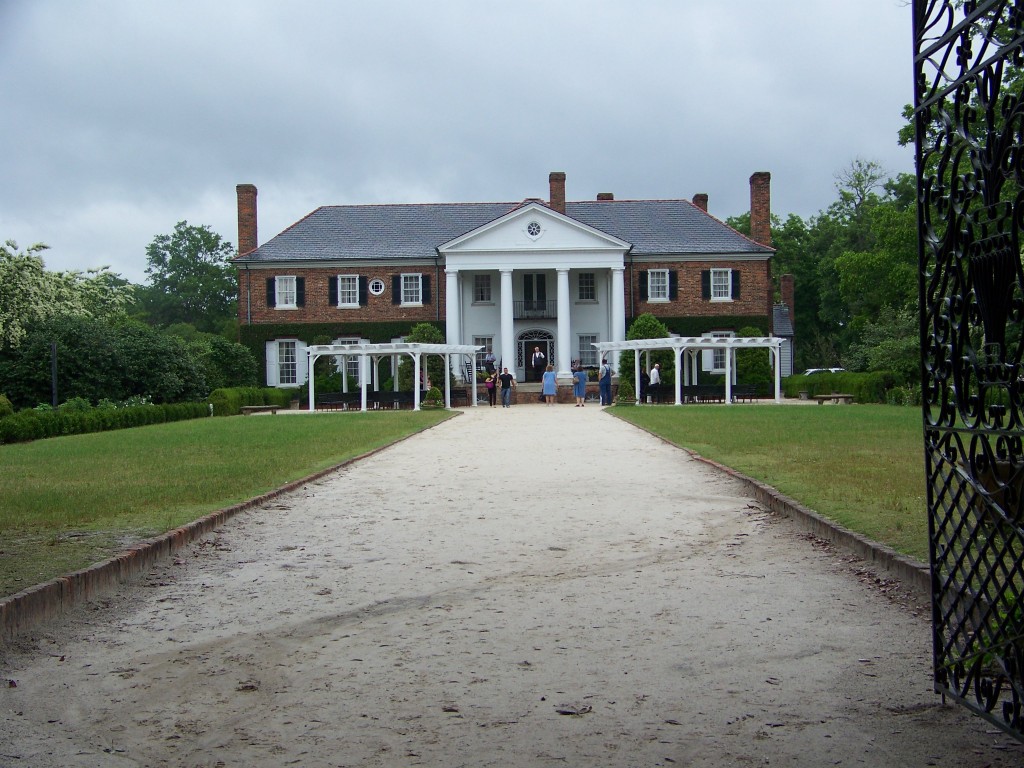 Last week, I began writing a post about our field trip to Boone Hall Plantation, but my narrative of the bus ride there ultimately took on a life and a post of its own. So today, I’ll share about our time at the plantation.
Last week, I began writing a post about our field trip to Boone Hall Plantation, but my narrative of the bus ride there ultimately took on a life and a post of its own. So today, I’ll share about our time at the plantation.
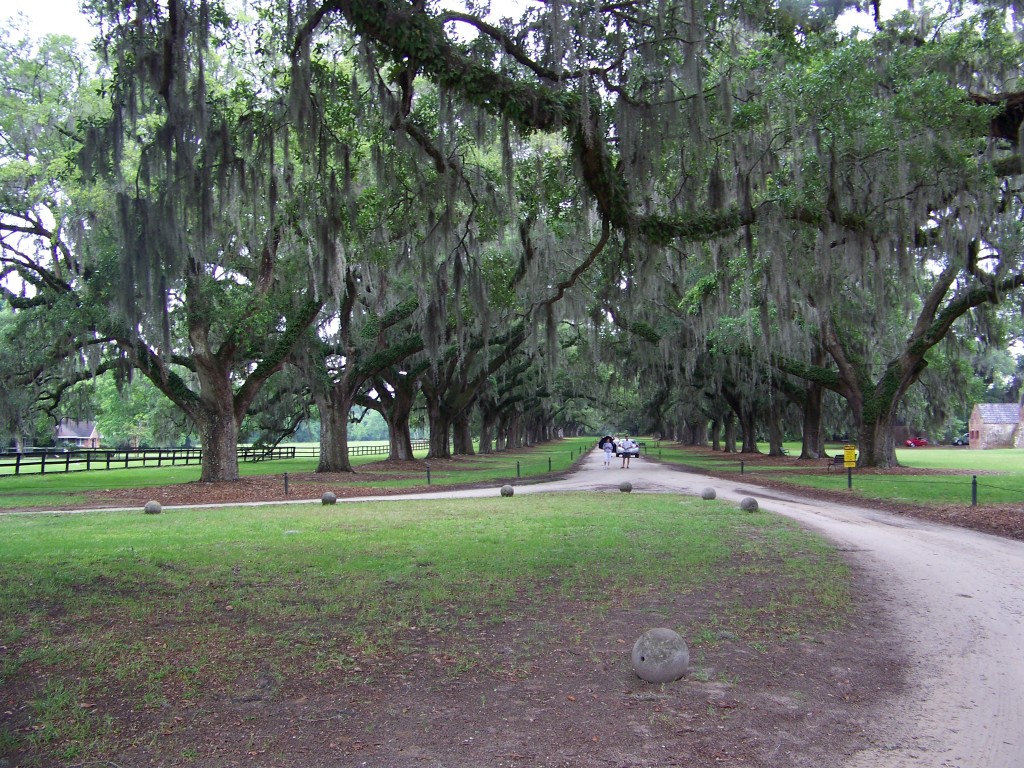
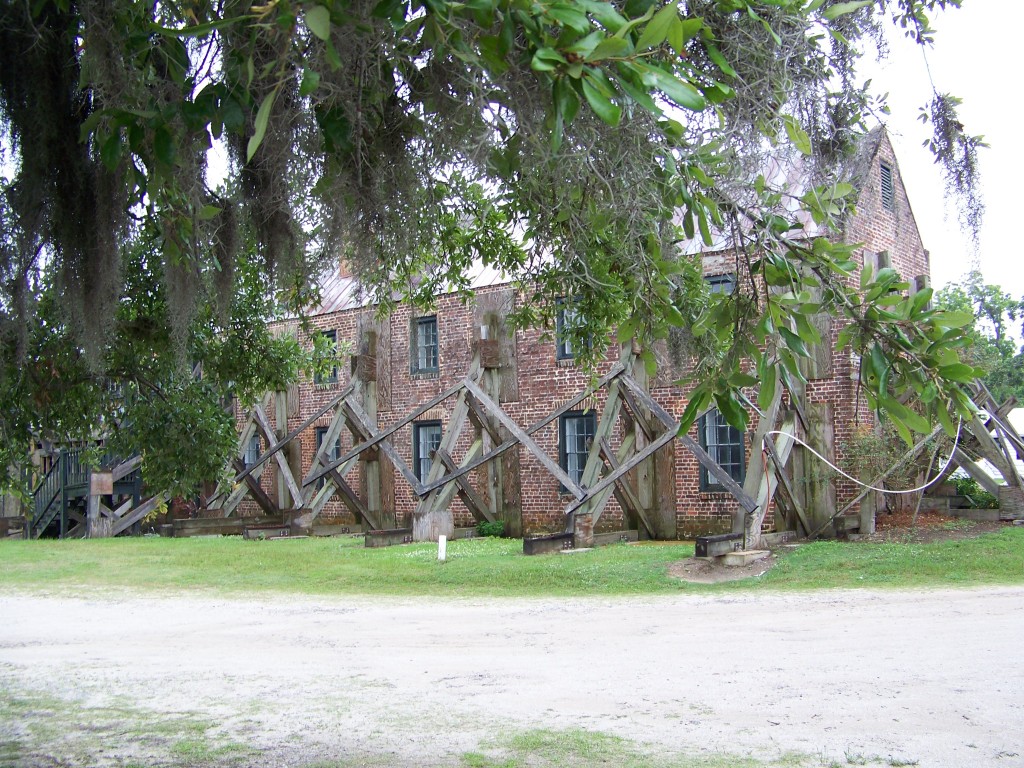
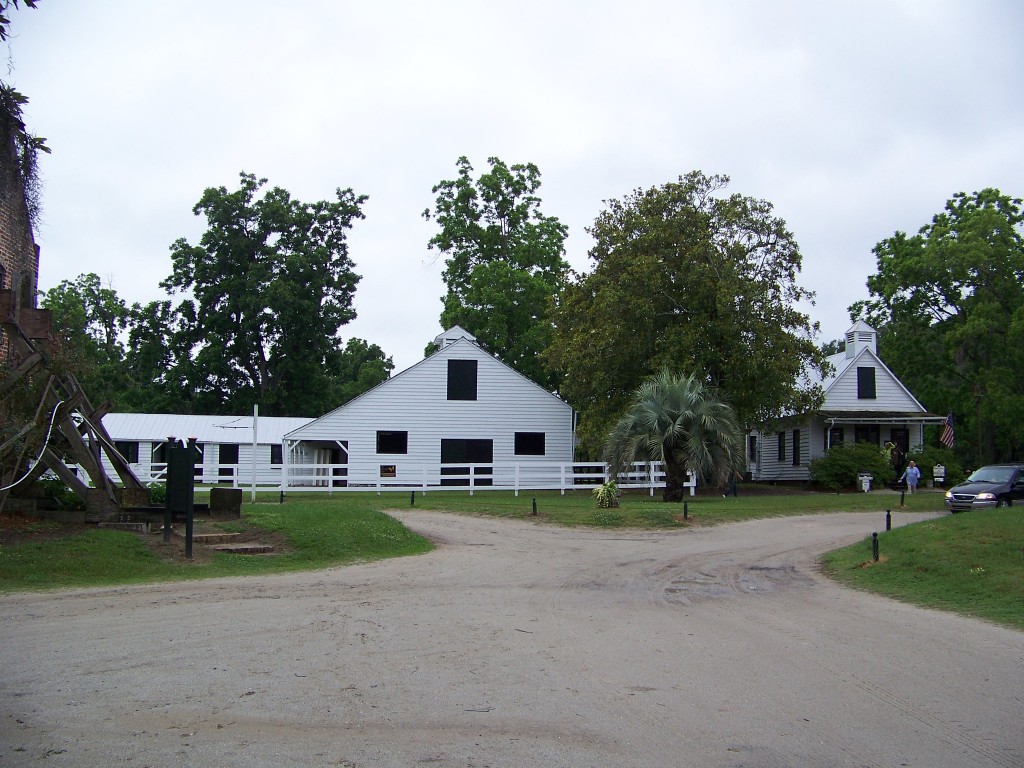 As we neared the plantation that morning, it began raining. Fortunately for me, for probably the first time in my entire life, I actually remembered an umbrella at an opportune time. This proved to be especially fortuitous when, after driving through the long entranceway to the plantation lined with large live oaks, we were asked to board an open trailer hitched to a tractor for a ride around the plantation.
As we neared the plantation that morning, it began raining. Fortunately for me, for probably the first time in my entire life, I actually remembered an umbrella at an opportune time. This proved to be especially fortuitous when, after driving through the long entranceway to the plantation lined with large live oaks, we were asked to board an open trailer hitched to a tractor for a ride around the plantation.
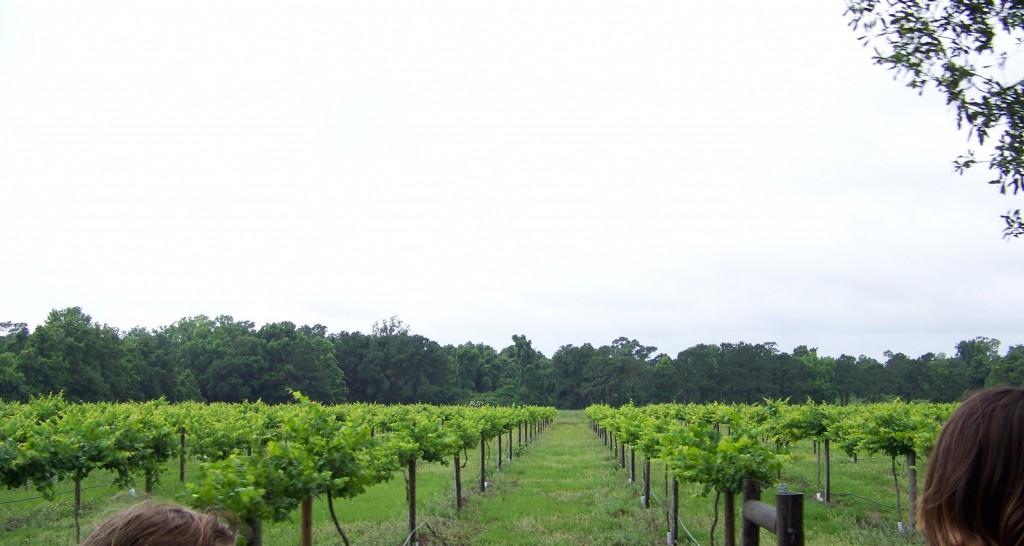
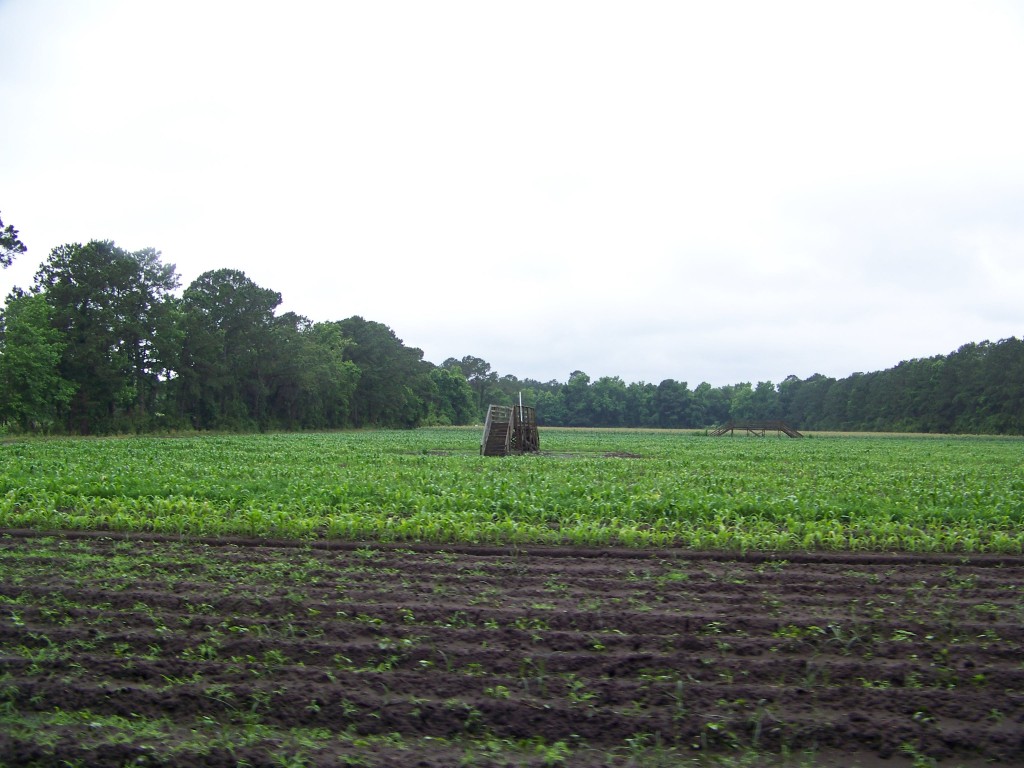 The seats were soaked, and of course there wasn’t anything remotely towel-like in sight. At least I had my umbrella, however, as it rained for the ride’s duration. The kids weren’t especially thrilled about the wet ride, but the adults were even less so, except for the teachers whose job it is to act as if they are thrilled to be sitting on wet seats being rained upon since it is all in the pursuit of higher learning (I know this from personal and professional experience). I, on the other hand, spent the ride thankful at least for my umbrella, which kept another chaperone and myself quite a bit drier than we would have otherwise been. However, I was a bit concerned about the purse the chaperone next to me was sitting on to avoid getting her pants soaked. I didn’t blame her one bit for sitting on it.
The seats were soaked, and of course there wasn’t anything remotely towel-like in sight. At least I had my umbrella, however, as it rained for the ride’s duration. The kids weren’t especially thrilled about the wet ride, but the adults were even less so, except for the teachers whose job it is to act as if they are thrilled to be sitting on wet seats being rained upon since it is all in the pursuit of higher learning (I know this from personal and professional experience). I, on the other hand, spent the ride thankful at least for my umbrella, which kept another chaperone and myself quite a bit drier than we would have otherwise been. However, I was a bit concerned about the purse the chaperone next to me was sitting on to avoid getting her pants soaked. I didn’t blame her one bit for sitting on it.
But y’all, that was a seriously cute purse.
After the tractor tour, we toured the slave quarters, our tell-tale wet derrières bringing up the rear.
Sorry.
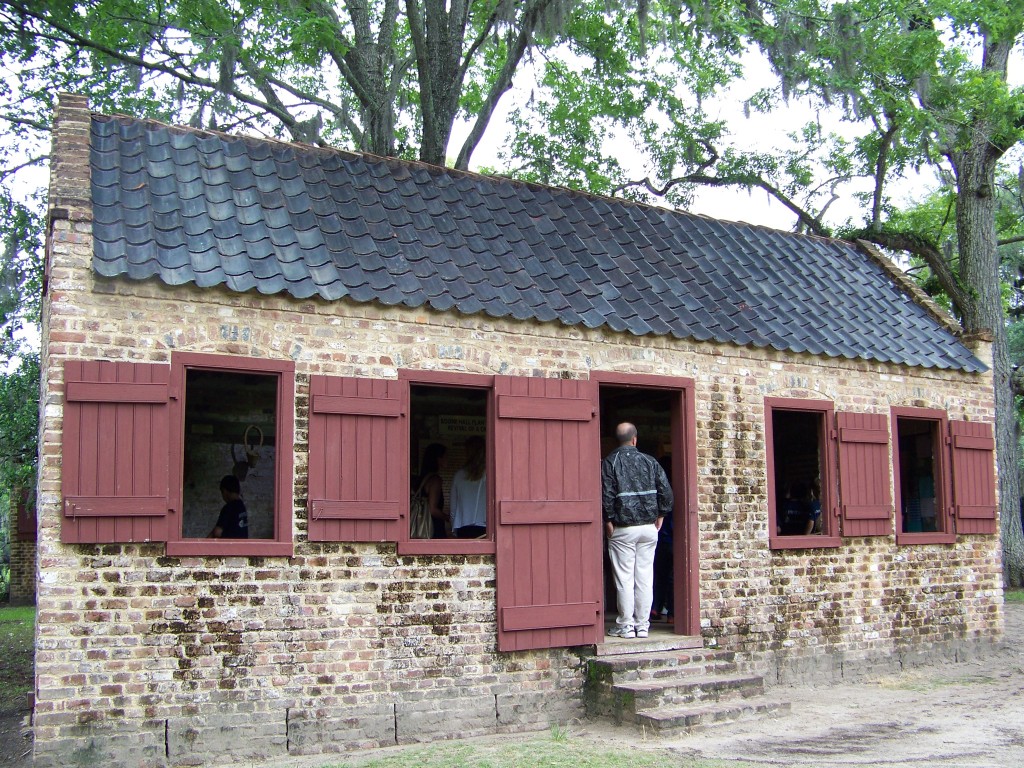 This may have been my favorite part of the tour (the slave quarters, not the tell-tale wet derrières), despite the fact that we had to rush though it for time’s sake.
This may have been my favorite part of the tour (the slave quarters, not the tell-tale wet derrières), despite the fact that we had to rush though it for time’s sake.
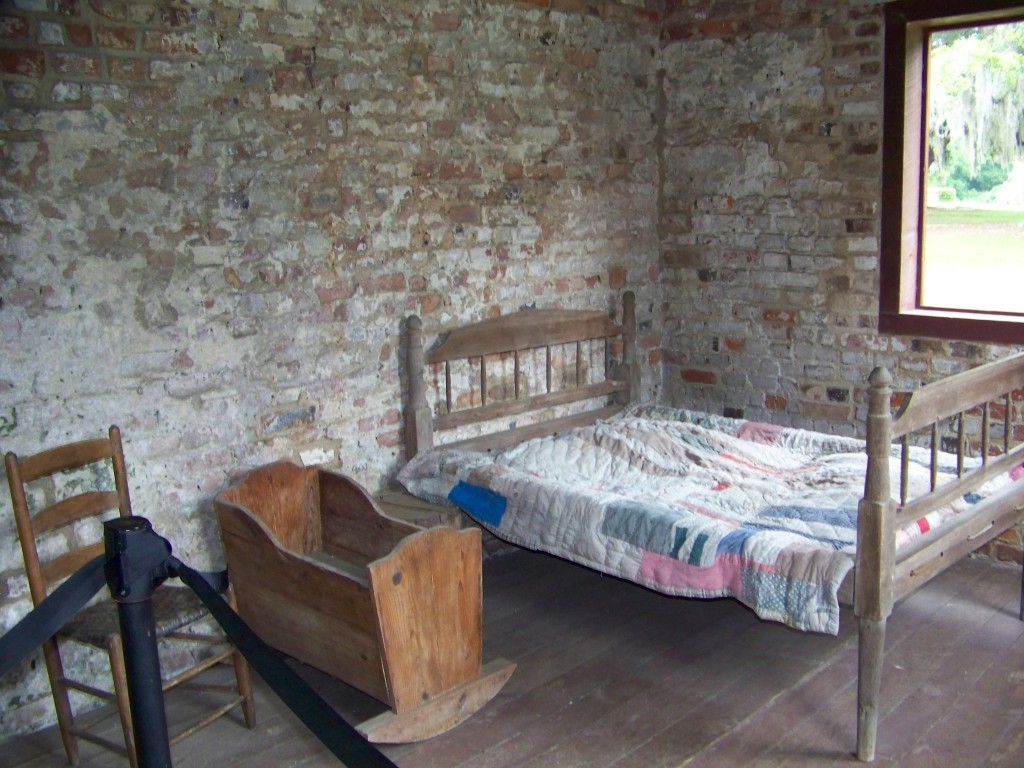 A row of small one-room brick homes line one side of the drive that leads to the main home of the plantation. Each room is appointed differently, addressing a different theme in the lives of slaves.
A row of small one-room brick homes line one side of the drive that leads to the main home of the plantation. Each room is appointed differently, addressing a different theme in the lives of slaves.
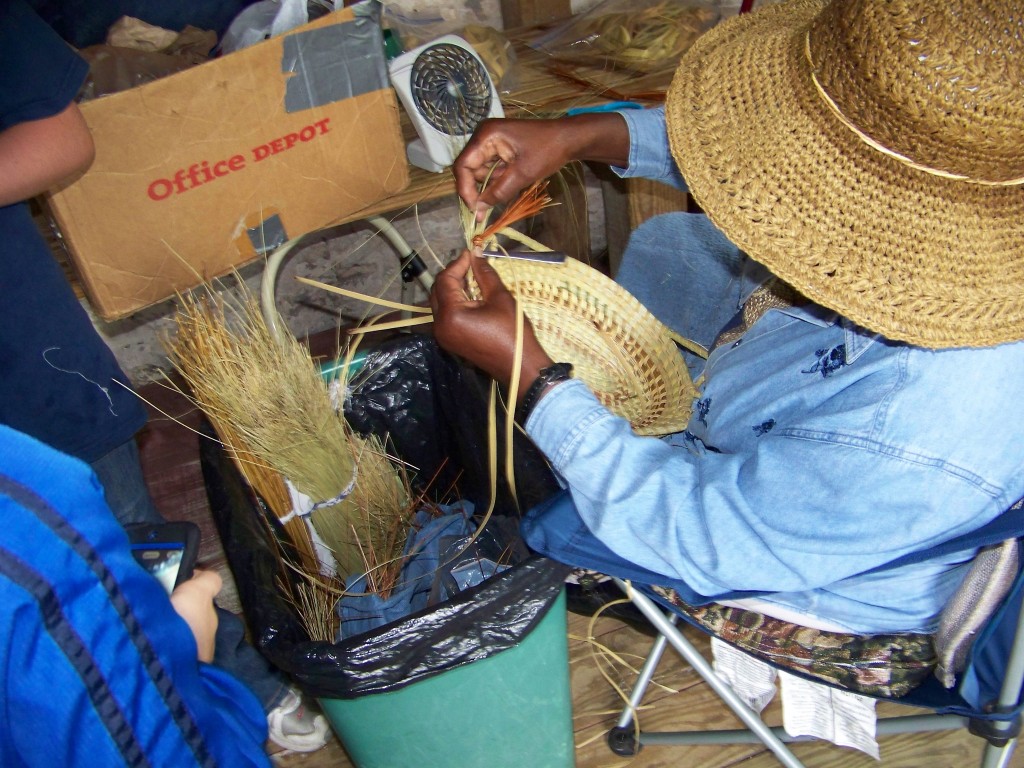
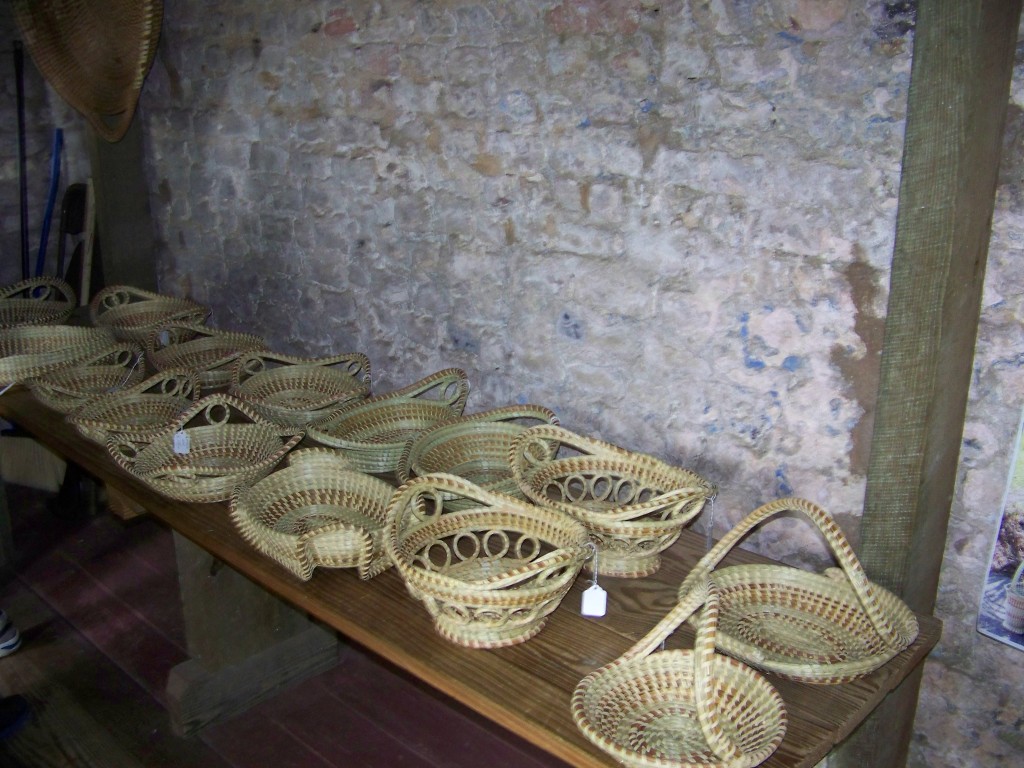 In one room, a woman sat making sweetgrass baskets. It was fascinating to watch her work. I asked her a couple of questions about learning to make the baskets (in summary: expect sore fingers and eventually calluses, and the younger you learn the better) and then had to move on with the group, but I could have stayed the afternoon in that house.
In one room, a woman sat making sweetgrass baskets. It was fascinating to watch her work. I asked her a couple of questions about learning to make the baskets (in summary: expect sore fingers and eventually calluses, and the younger you learn the better) and then had to move on with the group, but I could have stayed the afternoon in that house.
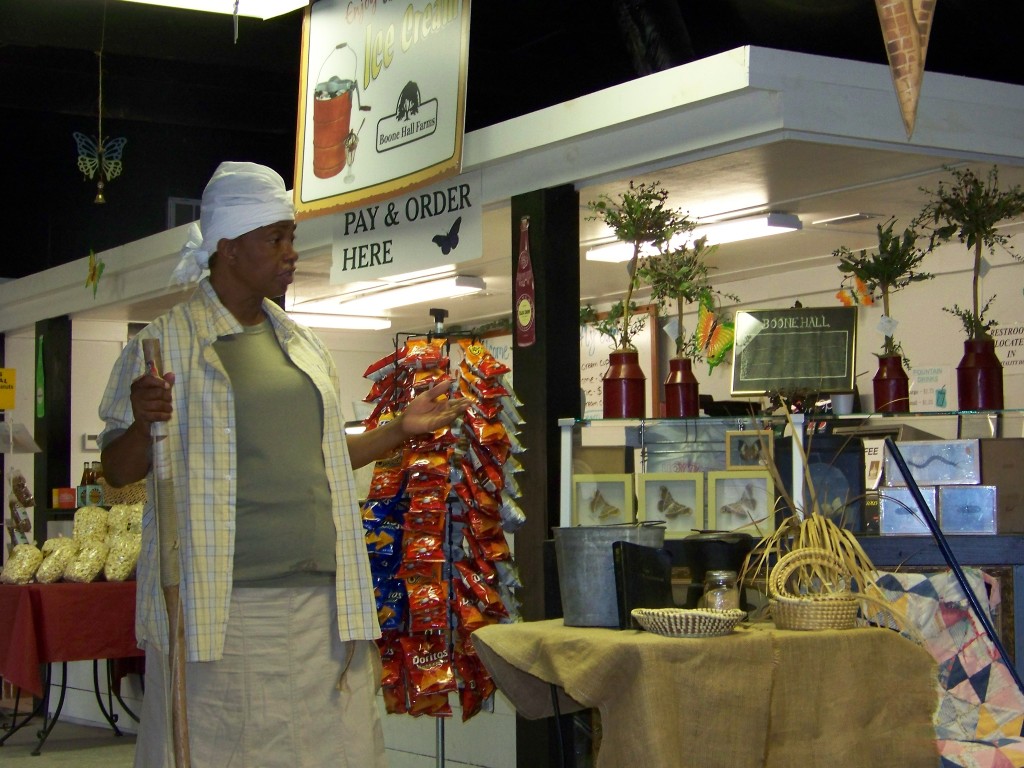 We moved from the slave homes to the “Exploring the Gullah Culture†presentation, which was held inside a small café instead of its normal outdoor theater location. The woman who gave the presentation was very engaging, and it was quite informative. Probably the only thing that detracted from the presentation was the fact that it was lunchtime, so I was extremely hungry at that point, and behind her were signs touting Boone Hall’s homemade ice cream.
We moved from the slave homes to the “Exploring the Gullah Culture†presentation, which was held inside a small café instead of its normal outdoor theater location. The woman who gave the presentation was very engaging, and it was quite informative. Probably the only thing that detracted from the presentation was the fact that it was lunchtime, so I was extremely hungry at that point, and behind her were signs touting Boone Hall’s homemade ice cream.
I’m just saying.
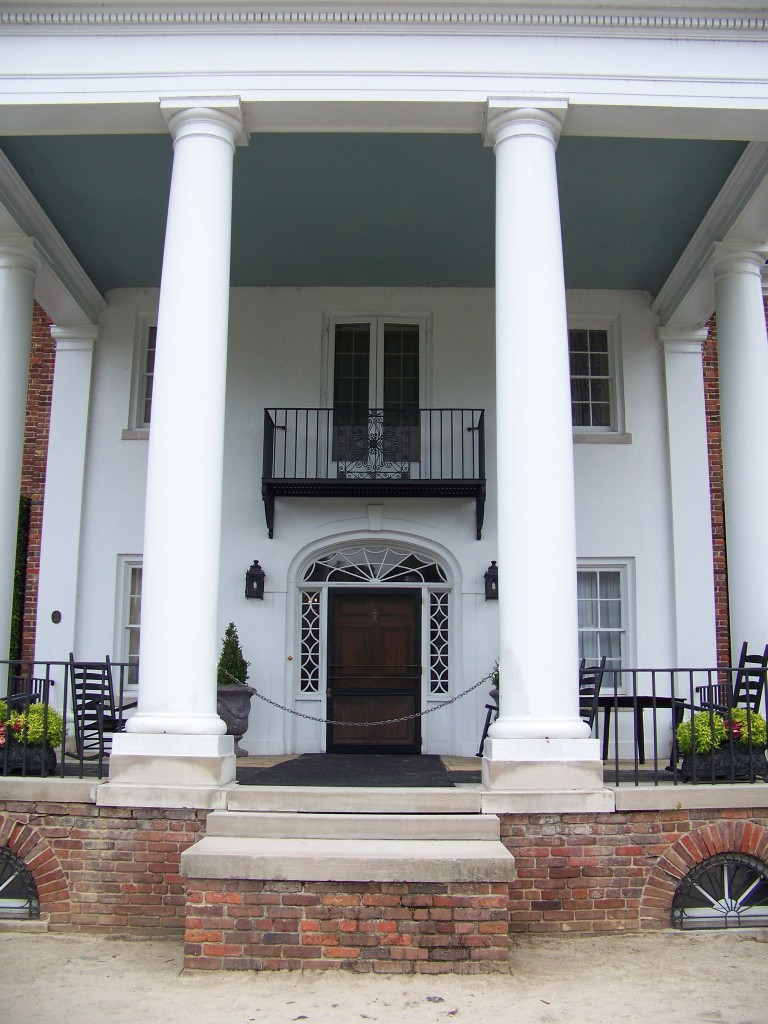 The final part of our trip was a tour of the main house, rebuilt in 1936 by Canadians rightly looking for a place to flee the cold for at least part of the year. My favorite detail of the home’s exterior is the carriage stoop that remains in front.
The final part of our trip was a tour of the main house, rebuilt in 1936 by Canadians rightly looking for a place to flee the cold for at least part of the year. My favorite detail of the home’s exterior is the carriage stoop that remains in front.
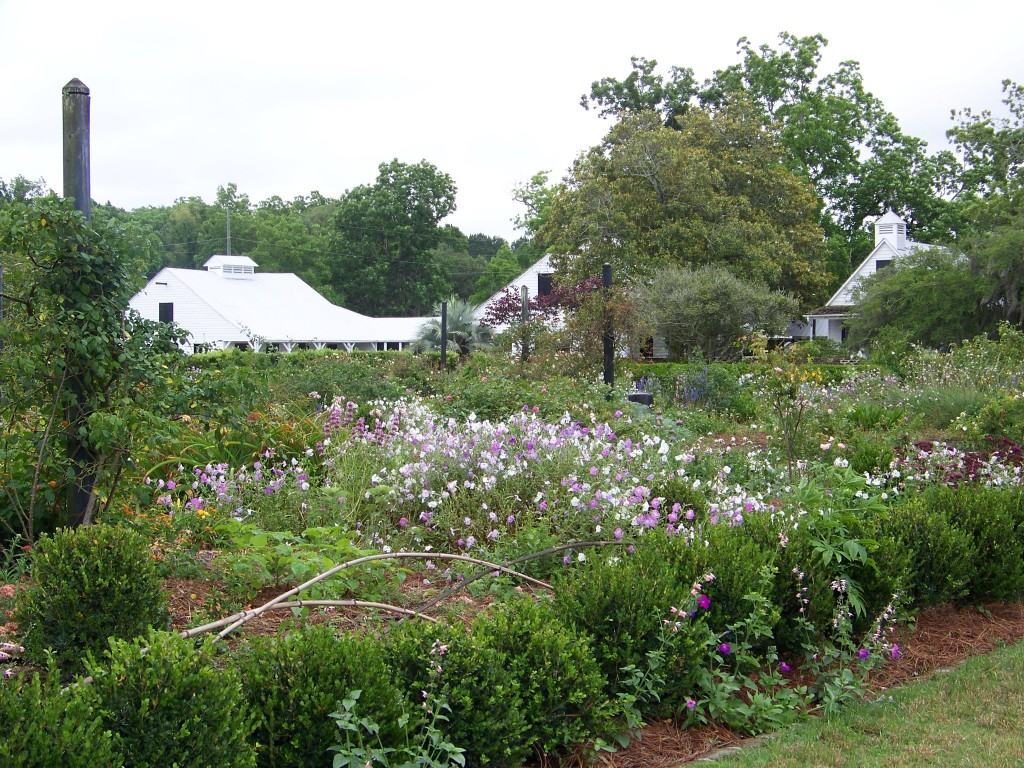
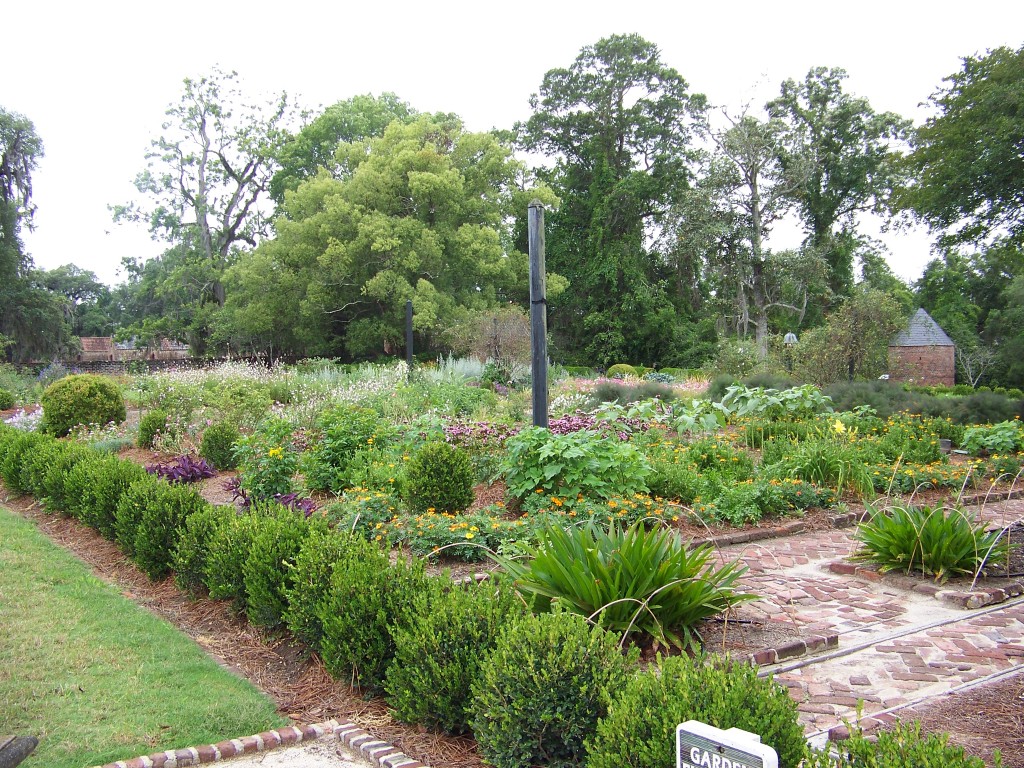
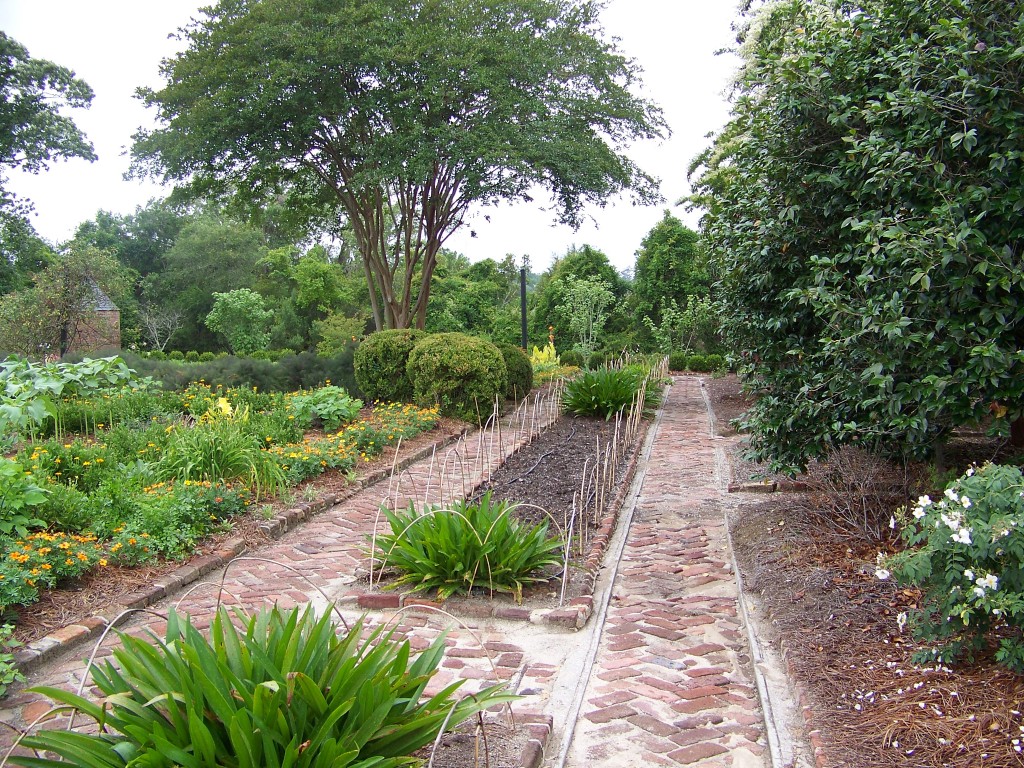 A large part of the exterior beauty of the house is really in the surrounding gardens, particularly in the front of the house.
A large part of the exterior beauty of the house is really in the surrounding gardens, particularly in the front of the house.
Apparently, the ingenuous owner found a way to harness the power of the tides in a nearby creek to power the house. This made me wonder why I couldn’t be one of those people that actually invents something highly useful. If I had been the owner of that house, I’d have been living in darkness. Let’s put it this way: If the world was filled with people like me, we’d all still be rubbing sticks together to start our fires. In all honesty, I’m not even sure we’d have candles yet.
So anyway.
The tour of the main house really only covers four rooms on the first floor, so it’s not as extensive as some of the house tours out there, but what we saw was interesting and just as informative as the Gullah presentation. Unfortunately but understandably, pictures are not allowed inside the house itself.
All in all, I highly recommend Boone Hall Plantation to anyone who has an interest in plantations, the Lowcountry, slave history or Gullah culture in the Charleston area. I’d really like to go back someday, actually, because our time there was somewhat rushed.
I wish I could say that the ride home was uneventful, but we did have the token puker midway back. I am happy if somewhat guilt-ridden to report that I had the exceedingly good fortune to not be the chaperone sitting closest to the poor child with motion sickness, so I was able to direct all of my mental fortitude toward staying awake and refraining from imagining the luxuries of a bus with functioning restrooms.
I love visiting old places like this. Great photos.
Thanks. Although hands down, you have some of the best “old places” to explore. I’ve been to Ireland twice and would LOVE to go back some day when my kids are a little older. So much beauty and history in your neck of the woods.
oh, my goodness. We visited Boone Hall a few years ago and it looks exactly the same!! The only thing different was that we went in August and it was scorching hot out and the gardens weren’t as green, with less flowers. We had an awesome time. I’m sorry to hear about the rain you had. That would be uncomfortable. Plus we had this amazing guy give the outdoor presentation…he was from Gullah decent and VERY entertaining and informative. I absolutely loved the moss tree-lined entrance! That had to have been a bit of a trip for your group! Anyways, thanks for sharing this!!
Thanks. I loved the live oaks lining the entrance too! Unfortunately, I just couldn’t get a good shot of them. I wish we had been able to do the outdoor presentation, because I think the surroundings would have added to the overall presentation. That’s good to know about August. I would have guessed about the heat but probably wouldn’t have thought as much about the gardens.